#Geese and Swans of North America
Text



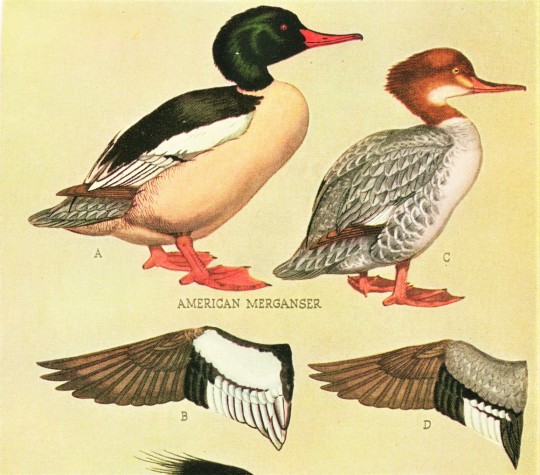
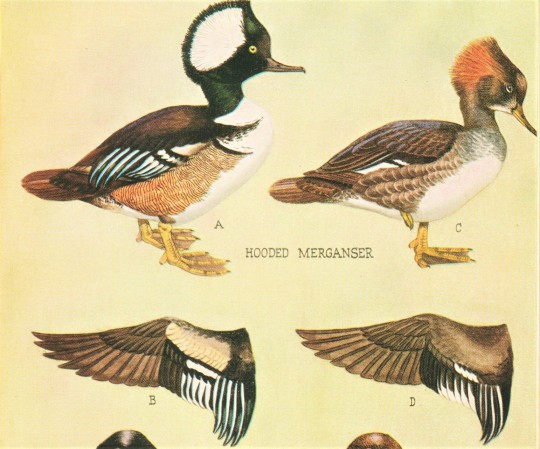

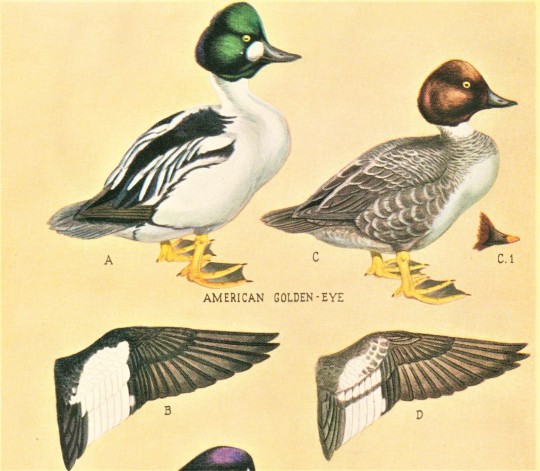
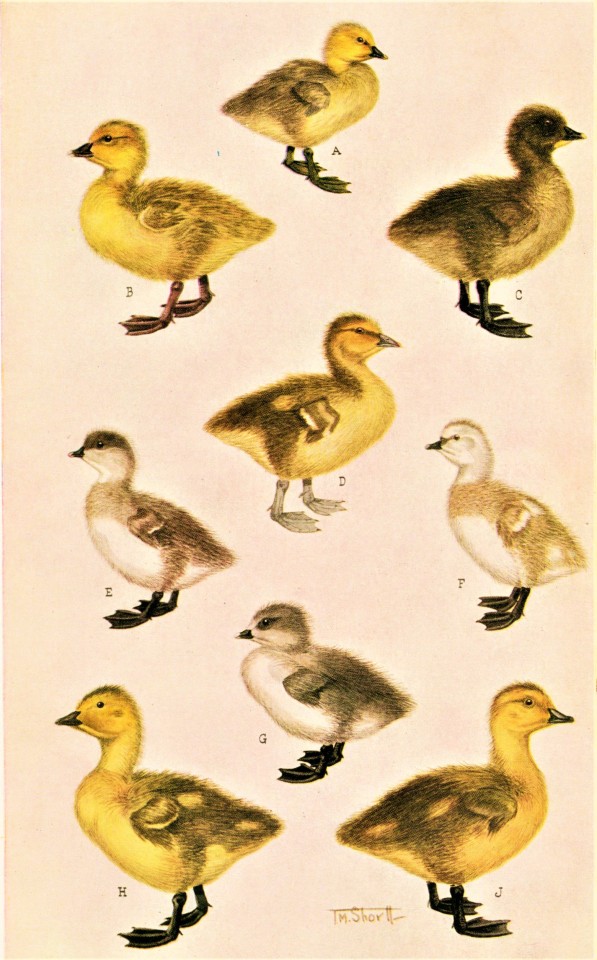
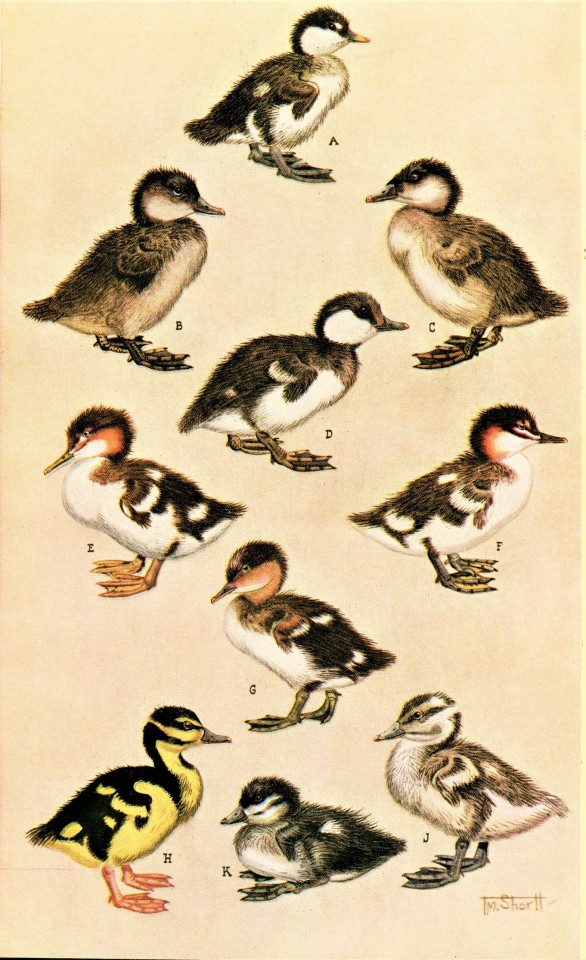
A Milwaukee Duck Feathursday
There are field guides and then there are field guides, and the famed Wisconsin conservationist and UW-Madison professor of Wildlife Management Aldo Leopold believes that this field guide is a step above: The Ducks, Geese and Swans of North America by Canadian engineer, businessman, and conservationist Francis H. Kortright (1887–1972), illustrated by the Canadian ornithologist and artist Terence Michael Shortt (1911-1986), and published in Washington, D.C. by the American Wildlife Institute in 1943.
In the introduction to the book, Leopold laments that "the existing literature on the identification of waterfowl describes manly their spring plumages. This is of little avail to the sportsman who is afield mainly in the fall, and it hardly suffices for the ornithologist, who is afield at all seasons." But in this guide, Leopold writes, "Mr. Kortright has sensed the need for a year-round waterfowl book and has done a scholarly job of writing one. . . . I do find much useful and interesting subject matter which most ornithologists omit. . . ." That Kortright has no formal training as a zoologist does not phase Leopold: "While he disclaims being an ornithologist, I detect no lack of ornithological competence in what he has written."
Of the illustrations, he writes, "Mr. Shortt's paintings, portraying all of the more important plumages of a given species, in themselves justify the publication of this volume." That both author and illustrator are Canadians also seems a plus: "To my mind it is appropriate that this book should issue from the pen of a Canadian. Canada is the birthplace of most waterfowl; this book attests her growing activity in waterfowl research and conservation."
We represent this field guide with images of some ducks most commonly found in our Milwaukee area: the Mallard, Wood Duck, and Blue-winged Teal are present in summer, with the Mallard and Wood Duck as year-round residents, while the Mergansers, Bufflehead, and Goldeneye are most prevalent in winter. We end with a couple of plates of random goslings and ducklings. Why? Well, because they're just so darn adorable!
View other posts related to Aldo Leopold.
View more Feathursday posts.
#Feathursday#ducks#The Ducks#Geese and Swans of North America#Aldo Leopold#Francis H. Kortright#Terence Michael Shortt#T. M. Shortt#American Wildlife Institute#bird paintings#wildlife artists#ornithology#field guides#mallards#wood ducks#blue-winged teals#mergansers#buffleheads#goldeneyes#ducklings#goslings#birds#birbs!
129 notes
·
View notes
Text

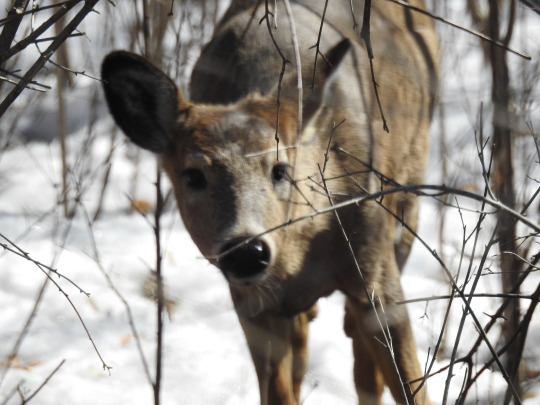
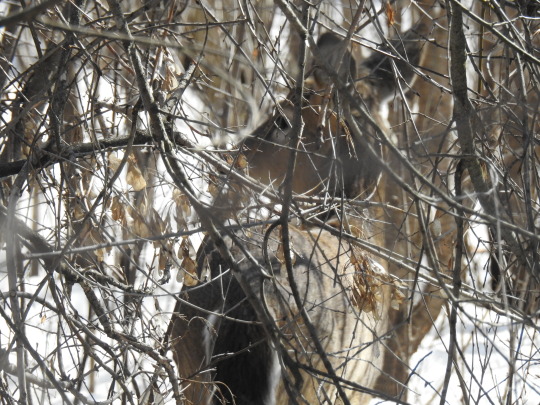




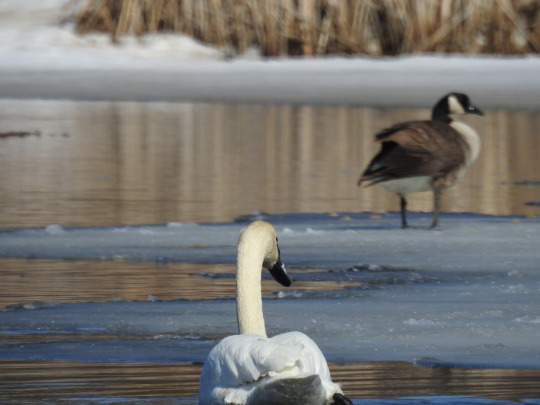






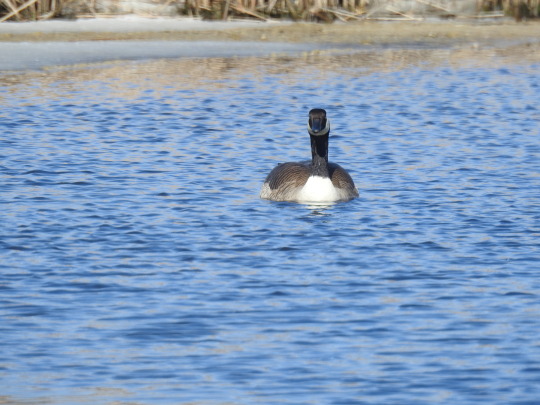


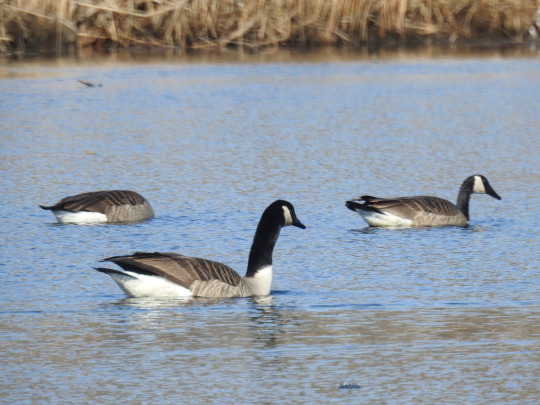

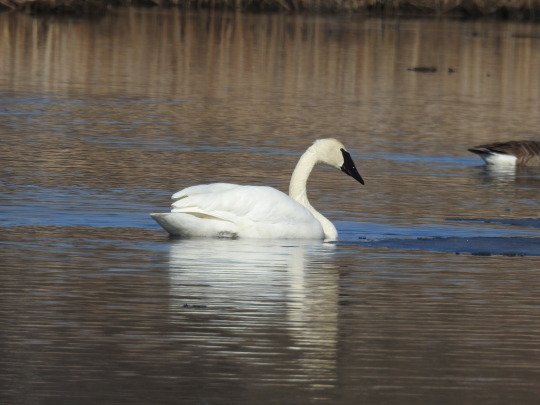
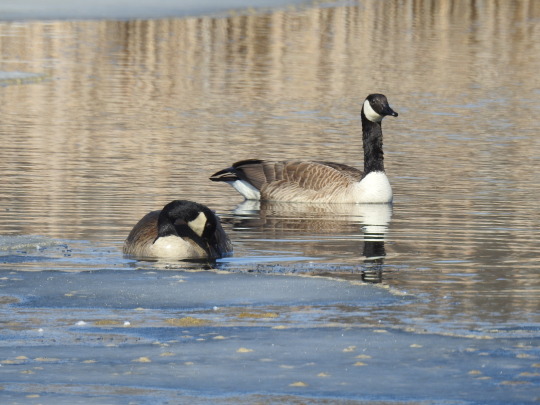
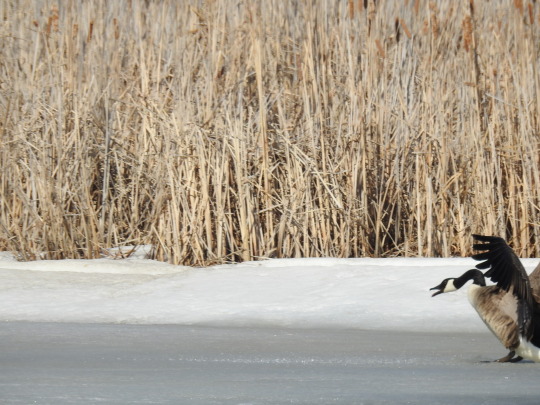

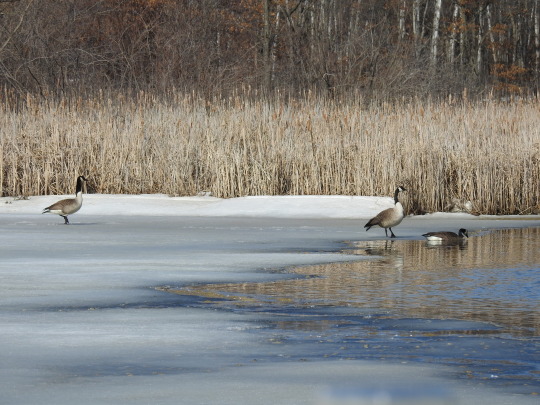



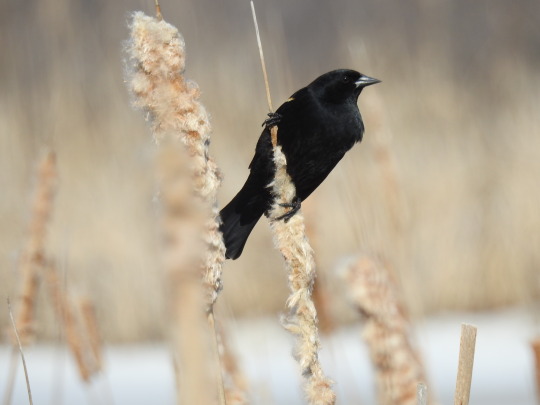

From a trip to a local park. I am aware some of these are not birds. Forgive me.
0 notes
Link
When exploring geese facts, it is important to be aware that a large number of birds fall under this category including ducks and swans. It is believed that these striking and intelligent birds have inhabited North America for more than 10 million years. Individuals investigating the Anatidae family all agree that each species is fascinating in their own unique way. Below are the top 30 geese facts that you should find very interesting.
0 notes
Note
Love, love, love the birds worldbuilding in Himring.
I've actually been digging through links looking for birds that occupy Nan Elmoth and the surrounding area - Himlad, northern Estolad, the banks of the Celon.
Any thoughts about the flying critters living around there?
I’ll start with Himlad!
Flora, fauna, geography and environment masterlist
Himlad was a realm in Eastern Beleriand, bordered on the West by the river Aros and on the East, its tributary, Celon. It means ‘cool plain’ in Sindarin and was described simply as a cold region, likely due to its proximity to the March and thus to the Iron Mountains, the cold fronts of which extend throughout the surrounding regions.
I have imagined it as a steppe environment with an ecology similar to Mongolia. We have little information on environment other than the description of cold but some speculation can be done due to the habitat and through looking at similar real habitats, mostly in Northern Europe and temperate parts of Asia as well as parts of North America which Tolkien was inspired by the prairies in (source: The Flora of Middle Earth)
As always I include world building notes at the end so it’s not just a list of species! And as always please consider the list incomplete! There are so so many birds and I often go back to add more. Feel free to request a more specific prompt to focus on or a more specific family of birds
In the plains and steppe: tawny pipit (migratory, traveling west in the winter), David’s snowfinch, brown accentor, Siberian stonechat (also found in shrubs), rosy starling, swan geese, steppe partridge, pallas’s sandgrouse, great bustard, common cuckoo (migratory), cornrail (migratory, avoids the more arid parts), bearded vulture, crested lark, golden eagle, steppe eagle, imperial eagle, grey faced buzzard, ring necked pheasant, hazel grouse, black grouse, blue rock thrush, common quail, horned owls, gray partridge, desert warbler
Roosting in the sparse trees and shrubs: Yellow browed bunting, common rosefinch, fieldfare, stock dove, common nightjar, little owl, pine bunting
River shores: snow bunting (migratory), red necked crane (migratory), greater painted snipe, osprey, coturnix quail, grey heron, hen harrier, white throated dipper, bank swallow
Other: fork-tailed swift (migratory, mainly aerial), white headed duck, house sparrow, brambling (migratory), song thrush (migratory), black billed caper, northern wren
World building notes:
-Hunting with eagles and other birds of prey is more common than in the other Fëanorian realms (though most utilize birds at least sometimes). Golden and steppe eagles are used primarily by Celegorm and his loyal servants; these are huge and beautiful birds whose use is in some ways a boast of the skill of their handlers
-Celegorm’s knowledge of the language of birds is highly utilized for the defensive and offensive projects of Himlad. Though his followers do not for the most part have this gift they are highly skilled in using tracks, traces and conditions to understand the presence of local birds and the implications thereof. They know what to make of the stray tail feathers of a steppe partridge versus the presence of molt. They know the difference between the tracks of
Of course this applies to other creatures besides birds but as this post is about birds…
-Grouse and quail are sometimes kept for meat and eggs though different species of quail then are kept by the Marchwardens of Doriath. Some of the species are brought from Estolad, Ossiriand or Western Beleriand. The birds are housed in large open pens with small nesting boxes. 
-There are also domestic species of chicken, peacock and quail like birds that are kept for similar reasons. Hybrid species, sometimes with native species, occur naturally and through planned breeding projects during the Long Peacd
-The camouflage of steppe creatures including birds is often used in the fashion of Himlad’s soldiers.
-The various sections of archers among the army and scouts are distinguished by varying types of feathers used in their arrows. For example, Swan goose feather is used for the scouts that patrol the borders and rivers, swift feathers are used among the smaller more specialized groups and golden eagle feathers are reserved for the archers who will be first in the lines of offensive movements.
-Game birds are hunted for meat though all parts are used. Bird bones are actually highly utilized by the host of Himlad, in jewelry and headwear as well as whistles and other tools.
As always please feel free to ask more!
33 notes
·
View notes
Text
North American Duck Poll: Hens, Pens, and Geese
Grab your binoculars and bird books, folks, because we are just under 2 days away from the first round of the follow-up North American Duck Poll! This tournament will focus on the females of each species, as I felt they were underrepresented in the main poll tournament. This poll is a great opportunity for us to become more familiar with hens (female ducks), pens (female swans), and geese (female geese, believe it or not). For anyone who's curious, male ducks, swans, and geese are called drakes, cobs, and ganders, respectively.
Below are brackets A and B. The winner of bracket A will face the winner of bracket B in the final.

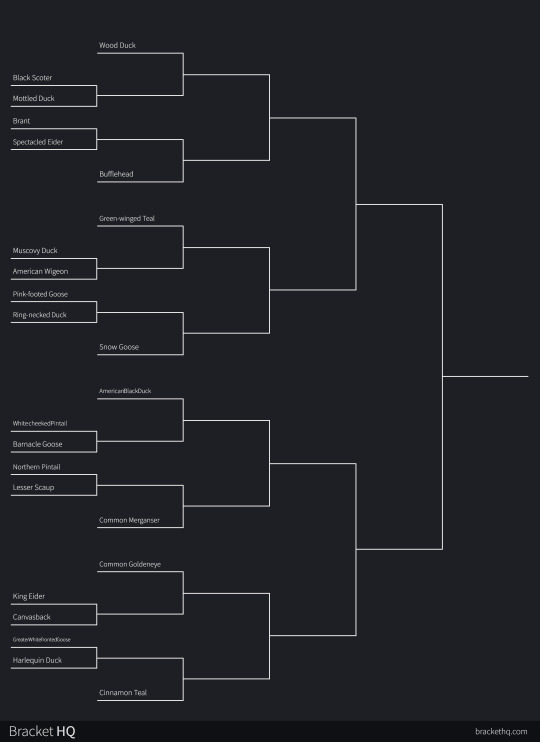
The first round polls will go up April 5th at 10 am PDT, and will stay open for a week. All subsequent rounds except the final will only be open for one day.
As with the previous tournament, the 48 species of waterfowl in this tournament represent all the native North American species in the order Anseriformes, as given in the National Geographic Field Guide to the Birds of North America. For information on how the brackets were seeded, please see this post which explains my methodology and gives the seed position of each species.
Any photos I use for polls will be photos licensed under Creative Commons licenses. Links to original photo sources will be provided in this post, which will be updated as new photos are added.
37 notes
·
View notes
Text
Animal Crossing Fish - Explained #231
Brought to you by a marine biologist and the last villager we'll be covering...
CLICK HERE FOR THE AC FISH EXPLAINED MASTERPOST!
Well...this is *probably* the last one...unless one of you guys can point out another I may have skipped. For now, I believe this is the last, so let's cover her - Blanche!

Blanche is a great villager; I had the pleasure of hosting her at my New Horizons island and she's just a doll. She's reserved, kind, and elegant. Although she is listed within the "Ostrich" class of villagers, many people don't agree. With her pretty white plumage and elegance, many, including myself, are convinced she's actually representative of a swan.
Swans are large waterfowl - the largest, in fact. They belong within the Family Anatidae, which includes the ducks (which we covered a while ago) and the geese. As can probably be assumed, swans are more closely related to geese than ducks, but all three live similar amphibious lives, found most often on or near the water. And, again, bread is bad for them. Don't feed them bread. Swans comprise their own very small Genus Cygnus, which includes the 6 species of true swan. Although most people recognize swans by their white plumage, this is only true for the 4 species native to the Northern Hemisphere. Southern Hemisphere species - the black and black neck swans - are not entirely white, as their names suggest.
Unlike most AC Villagers who represent just the idea of a species or a cartoon version with wacky colors, Blanche is most definitely a Trumpeter Swan (Cygnus buccinator), as given by her all-white plumage and all-black beak. Although she doesn't share the black feet of the Trumpeter.

By Andy Reago & Chrissy McClarren - Trumpeter Swan, CC BY 2.0, https://commons.wikimedia.org/w/index.php?curid=63974753
The Trumpeter is a native to North America. Some sources claim this species was widespread throughout the northern half of the continent, from Alaska, throughout Canada, down to California to the East coast of North Carolina. However, the Trumpeter was hunted extensively for game, meat, feathers, and skins for all sorts of products in 1800's America. By the 1900s, just 70 birds remained in the contiguous US, protected within Yellowstone National Park. Fortunately, all was not lost - an aerial survey in the 1950's of Alaska's Copper River revealed a secret population of these swans that numbered around 1,000. This discovery jump-started the breeding and reintroduction program that returned Trumpeters to some of their native states almost 100 years after they'd disappeared. The program could be called a success - by 2010, there were 46,000 Trumpeters, with a number of reestablished populations no longer needing breeding program assistance!
However, the Trumpeter is much more common in the Northwest, with a sort of "Eastern barrier" blocking them from returning to supposed native grounds on the East coast of the continent. This is probably due to the loss of suitable habitat as well as the spread of the invasive Mute Swan. Removal of Mute Swans in Michigan showed a huge increase in Trumpeter Swan populations, which is basically smoking gun evidence to show it's non-native swans inhibiting these old natives. Mute Swans are large and aggressive, competing with other waterfowl for prime waterway real estate. In my experience in New York, they're just assholes. Unfortunately, there are still some states, like Connecticut that *protect* Mute Swans, and some argue Mute Swans have naturalized into North America, or are even native! I am not one of those people lol.
And there you have it. Fascinating stuff, no?
#trumpeter swan#blanche#ac villagers#animal crossing#animal crossing new horizons#swan#waterfowl#birds#animals#science in video games#animal crossing fish explained
15 notes
·
View notes
Text
If you have ever interacted with your state Fish and Wildlife Service, or If you have ever read anything with a large mainstream US based conservation NGO ( like Audubon or the National Wildlife Federation) you have probably come across “ The North American Model of Wildlife Conservation” ( or some variation thereof ) the idea is that conservation, at-least on this continent, is somehow crucially tied to hunters, that hunters provide most of the real support for conservation, either financially as hunting licenses, duck stamps, and taxes on equipment help fund state and federal conservation programs, or in terms of being an interest group, as hunters want wildlife habitat/wildlife so they can hunt, and that this is a great innovation of the US/Canada we should be patriotic about ( in a vaguely rural Red Tribe way)
To get a sense of what makes hunting in the US different from what is before, we have to go back to Europe, throughout most of European history since at-least the Middle Ages, hunting, at-least of large “game” animals like deer, boar, bison, and wild cattle. Was an Aristocratic activity, It was often restricted legally from commoners at all. ( If you ever heard the funny factoid about The Queen owning all the swans in Britain, this is why) . Aristocracy wanted to hunt animals, and this motivated them to conserve There populations, in part by restricting and regulating hunting to avoid the tragedy of the commons . We also see them maintain large areas of non cultivated semi-natural space as “ hunting parks” so The wildlife has habitat to maintain their population in , so they can continue to hunt them.
The last wild European Bison populations ( before reintroduction from captivity) belonged to the Russian Tsars and before that the Polish-Lithuanian Aristocracy, from the 13-17th century the last Aurochs populations could only be hunted by Aristocracy and then Royalty, and a number of British cattle breeds ( Chillinghan, British White Park , Vaynol, British White) are descended from populations of Feral White cattle kept as ornamentation and hunting victims on large semi forested/ semi-meadow parks since the Middle ages
I want to highlight this was not a uniquely European Phenomenon, for example, In China, the last herd of Milu Deer, in the late 1800’s , was maintained in the walls of The Nanyuan Royal Hunting Garden, owned by the Emperor Tonghzi. Eventually the garden was stormed by German Soldiers, and the only reason the species survived is some were exported beforehand from the Garden to European zoos. You can also look at the Establishment of Game Reserves for the white elite in Southern Africa.
As european settlers colonized North America, armed with guns and free from Aristocratic regulations, and eventually coupled with the rise of large industrialized populations in the North East, they engaged mainly in not the subsistence, sport hunting, or even hunting of pests your probably more familiar with, but Market-Hunting , hunting, especially unregulated and at industrial scale , for the sale of the animals body parts as commercial goods, Meat, Leather, Fur and Feathers from wild land animals were sought in large numbers by the general public, including in densely populated areas.
Elk and other deer, Geese, Heath hens, Passenger pigeons, Carolina Parakeets, pronghorn, Wading birds, Bison, Beaver, Fishers, american Martens, sea Otters, sea mink, trumpeter swan, Labrador duck, Great Auk, and many other species had There populations severely impacted, often to the point of extinction, by this commercial scale hunting for their body parts
Meanwhile, we started to see the formation among the settlers, at-least the Upperclass ones, of an American Identity in contrast to that of the English or other Europeans. This identity thought of themselves as tougher, more rugged, less civilized ( but better suited for “civilizing”, this wasn’t seen as in conflict, like how a wild tough man may tame a wild Bronco) than the Europeans, and was tied to the idea of the US as a Wild uncivilized land not yet altered by man ( and of-course the dehumanization of native Americans and the Denial that they have shaped and altered the land severely). Think of Davy Crocket, and Pail Bunyan, and Buffalo Bill. Look at The Hudson River school of landscape painting, and how it diverged from older European styles, the focus on wild landscapes instead of farmland, the sharp jagged rocks and landscape formations , the twisted trees and snapped broken branches, the dramatic storm clouds, and rushing waterfalls. It is nature wild, but particularly nature powerful and rugged, untamed and full of rough “imperfections”, this is how the US Naturalists of the time saw themselves and There country in contrast to Europe.
Now the Environmentalist movement as we know of it was really kicked off by Rachel Carson’s book Silent Spring, in 1962. That is when it went mainstream, when we see a greater focus on pollution, and the start of the understanding of different species as playing an important role in supporting a functioning ecosystem rather than being set pieces on the landscape
Before this Modern Environmentalist movement however , we had an older Conservationist movement, that was based in this rugged American Identity I discussed already. These people were “ Naturalists” , mostly outdoorsy upper class white men, who engaged in sport hunting alongside other outdoorsy leisure activities , There focus was on conserving natural resources, like Game Animals or Timber, so they could be exploited in perpetuity, as well as preserving scenic natural areas for themselves to hang out in and maybe shoot something in.
Teddy Roosevelt’s role in the timber industry is a great non-animal example of how these people see the natural world, he brought much needed regulation and reform to the Lumber industry, without which we might have lost all our forests and the US ran out of wood, but he only saw a forest as a source of wood, not as an ecosystem, so today large areas of federal/state land, that are in theory natural areas, are leased out to the timber industry to operate what are essentially monoculture farms, no more a forest than an apple orchard, but labeled as forests by the US government.
So these upperclass sport hunters, who recognized that the demands of the Market economy were unsustainable, put extreme regulations into place. The Migratory Bird Treaty Act, was aimed mainly at protecting birds, especially wading birds, from the feather trade for women’s hats, as was the first National Wildlife Refuge, Pelican Island. hunting and fishing regulations and licenses were introduced, operated by state governments, that restricted how many animals could be taken by how many people, Regulations on the production and sale of meat restricted Market hunting for venison, poultry and other meats for the table out of existence. The International Whaling Commissions Moratorium heavily restricted commercial hunting of large Whales globally, and among other things, the first National Park, Yellowstone, was note worthy for being home to the last wild bison herd in the US, with continued hunting in the park labeled “ poaching” .
Today the fur trade is all that’s left of Market Hunting of warm blooded native animals in the US and Canada, and even then it it only exists still as means of supplemental income and a hobby, not as a large scale industry and means of living.
So while the Conservationist of old were sport hunters motivated by sport hunting, their success largely if not mostly was due to being able to control, restrict, regulate and curb hunting. Including regulating Market Demand related hunting practically out of existence. The focus has been on how to control hunting pressure, giving money from hunting activities to the Fish and Wildlife Services makes extra sense in the light that they mostly exist to keep the hunters in line in the first place. If there was something novel about the North American Model, it wasn’t hunting incentivizing conservation, or even putting the wildlife into government hands, It was the democratization of hunting, while avoiding the tragedy of the commons, and the Near Elimination of trade of terrestrial wild animals based goods.
While it’s true Hunters give a share of funding to “conservation” larger than There share, it’s still a tiny share of the total ( 6% as of 2015 according to one study, likely decreasing, while they were 4.6% of the population in 2020 ( combined with fishers 18% in 2016)), and much of that is due to peaceful wildlife/nature goods, like high end cameras, Kayaks, or camping equipment, not getting the Conservation Taxed, additionally a large share of those funds would not be needed, or could be used for other things, without hunters , as they wouldn’t be needed for hunting regulation/support in the first place. We could also see great support for mushroom or wild plant foraging for income, or better yet, better funding from the general pot of State or Federal governments. But either way , the vast majority of funds, 94%, is already from the General public, not hunters specifically)
( This isn’t even to get into the ways advocate encourage damaging environmental practices or damage the environment themselves even under this system, but I’ll leave that to another post maybe, this is already extremely long)
The North American Model of Wildlife Conservation is based on the democratization of what we do with wildlife, and the regulating out of entire forms of hunting entirely. , as the general public supports conservation and protection of wildlife even if they don’t hunt, As hunters make up a tiny shrinking share of the population ( 7.7% in 1960 and shrinking since) , are not a crucial source of conservation funds, and a minor but large and growing share of the public disapproves of hunting, opposing hunting, and decentralizing hunting interest groups from wildlife and ecosystem management discussions , is not only the morally right choice, but in the spirit of the North American Model hunting advocates praise.
0 notes
Text
Fwd: COURSE: Online.WaterfowlManagement.Aug28-Dec7
Begin forwarded message:
> From: [email protected]
> Subject: COURSE: Online.WaterfowlManagement.Aug28-Dec7
> Date: 8 June 2023 at 05:18:06 BST
> To: [email protected]
>
>
> Online Waterfowl Ecology & Management Course: Certificate & Credit Options
>
> Instructor(s): Dr. Philip Lavretsky and Dr. Richard Kaminski
>
> Start date: August 28, 2023
> End date: December 7, 2023
>
> Students will
> - study waterfowl evolutionary and annual ecology of North American
> waterfowl, waterfowl and plant identification, waterfowl harvest
> management, waterfowl diseases, and conservation of ducks, geese
> and swans.
> - learn about evolutionary histories, population ecology and management
> of this dynamic and diverse group.
> - understand waterfowl and wetlands of North America, and discuss
> current waterfowl and wetland issues.
> - be exposed to best conservation and management practices of
> populations and their habitats, including how NGOs, state and federal
> agencies partner to conserve populations and their habitats.
> - review contemporary and classic literature.
>
> Note: It is advised that students have prior course work in basic ecology
>
> About the course
> - For-credit and noncredit options available
> - Offered online with asynchronous sessions
> - Tailored to junior/senior standing undergraduates, graduate students
> and working professionals; graduate students and professionals will
> complete undergraduate requirements and write an “in my opinion”
> essay to earn graduate credit
> - Dual language course; material will be presented in English and
> Spanish
>
> Noncredit option
> (Offered by the College of Science in partnership with
> Professional and Public Programs)
> Tuition: $1,800
> A Certificate of Completion will be awarded at the end
> of course.
> Contact: [email protected]
> Website:
> https://ift.tt/NwUELlI
>
> For-credit option
> (Available from the College of Science)
> Credits earned: 3 semester credit hours
> Tuition: $600 per credit hour* for a total cost of
> approximately $1,800 (*Subject to in-state and out-of-state fees)
> Contact: [email protected]
> Undergraduates apply here: https://ift.tt/CxZcoil
> Graduate Students apply here:
> https://ift.tt/NF4Z6sz
>
> Philip Lavretsky
0 notes
Text
#1946 - Branta canadensis - Canadian Goose
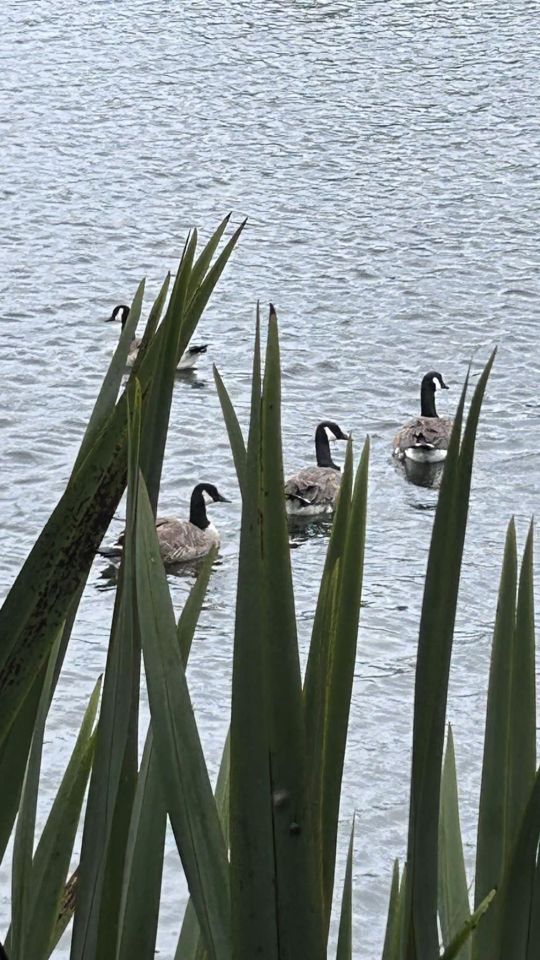
New Zealand certainly got the short end of the stick when it came to introduced species - not only did ‘Acclimatisation Societies’ go out of their way to introduce every British plant and animal that reminded them of home, they also introduced species from all over the Empire, including a few from Australia that have become major problems. It’s one of the reasons @purrdence flew 5300km and the first bird she saw was a Black Swan.
Apparently they also introduced Canadian Geese, for hunting, in 1905. The birds might be famous long-distance migrators, but they’re not THAT good. Some of the New Zealand population do manage to fly across the Tasman, and end up in SE Australia, where they get ‘controlled’. They did manage to reach Hawaii by themselves, though, and evolved into their their own species. In fact, Branta canadensis and the sister species the Cackling Goose Branta hutchinsii are so widespread and diverse that one ornithologist has suggested they should actally be 6 different species and some 200 subspecies. The International Code of Zoological Nomenclature thought that was a bit much.
Native to the arctic and temperate regions of North America, and occasionally found in northern Europe. Introduced to the United Kingdom, Ireland, Finland, Sweden, Denmark, New Zealand, Japan, Chile, Argentina, and the Falkland Islands. Like other geese, primarily herbivorous and migratory, and settling close to fresh water, brackish marshes, estuaries, and lagoons.
Canada geese thrive in urban and cultivated habitats, which provide food and few natural predators. That and their aggressiveness, begging for food, danger to aircraft, and pollution of waterways and habitat has made them something of a pest in many parts of the world.
0 notes
Text
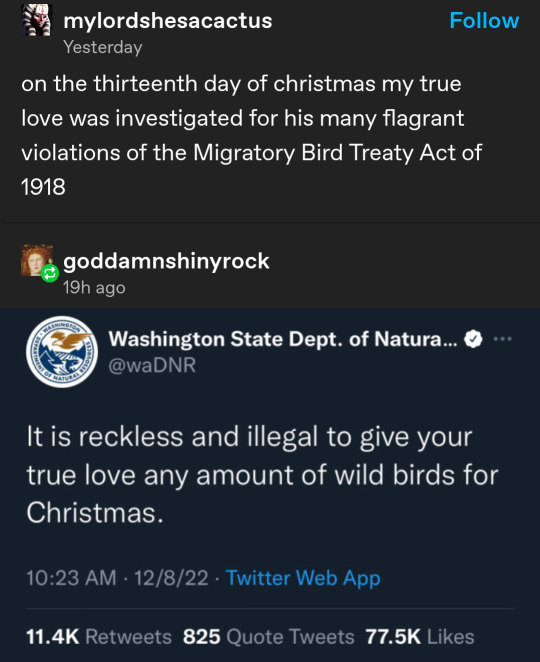
The Migratory Bird Treaty Act of 1918 protects species that occur naturally in the United States of U.S. territories.
In the traditional English Christmas carol "The Twelve Days of Christmas" there are six distinct bird species mentioned, which depending on version of the song and interpretation of the lyrics, most likely refer to species endemic to Europe and not present in North America.
The first would be the partridge. This could refer to many different species of smallish galliforms which are endemic to basically every continent BUT North America (and Antarctica.) The partridge referred to in the song however would likely be the red-legged partridge, (Alectoris rufa) a partridge species found endemically in parts of Western Europe that was introduced to the British Isles in about 1770 as a gamebird. They are not protected under the MBTA, but one would likely have to go through one's state's exotic animal laws and U.S. Fish & Wildlife to acquire them, though they do not appear to be outright illegal to own.
The turtle doves referred to in the song are likely European turtle doves (Streptopelia turtur) and would not be protected under the MBTA. While I am uncertain what the legality of owning one in the United States is, their vulnerable status in Europe and disinclination to be domesticated means they would probably difficult to acquire.
The three French hens featured in the third verse are domestic chickens, (Gallus gallus var. domesticus) possibly the Bresse Gauloise breed, and therefore a wonderful, ethical bird to keep in captivity. Aside from the breed being strictly pedigreed and illegal to raise outside a specific part of France. Not protected by the MBTA.
The four "calling birds" in older versions of the song were "colly birds" which is an old common name for the European blackbird (Turdus merula.) They are not protected by the MBTA and are uncommonly captive bred and sold as pets in the United States, though they are in decline in much of their range. In some later versions this verse instead mentions four canary birds which are of course common and legal pets.
The geese a-laying, similar to the French hens, are fairly self-explanatory. Domestic geese descended from wild European ancestors. Not protected by the MBTA.
And finally the swans. While there are North American swan species such as the trumpeter swan and tundra swan, I am going to assume the song refers to mute swans (Cygnus olor) which are commonly bred in captivity and legal to keep in the United States.
Only if one stretches one's interpretations of the song could the true love have commited ANY violations of the MBTA. My conclusion is that there were NONE. If we assume the geese or swans were wild and of a species endemic to North America, recieving them as a gift from one's true love would most certainly violate the MBTA. With the other birds, there may be other legal concerns unrelated to the MBTA, which may vary state by state. ALL THIS BEING SAID. The ethical implications of being given any of the WILD species mentioned are pretty dire, and the true love probably should find a better gift for at least the first, second, fourth, and seventh days of Christmas. And the hens and geese are a long-term commitment.
0 notes
Text
TYPES OF BIRDS IN POULTRY
Birds are a group of warm-blooded vertebrates constituting the class Aves (/ˈeɪviːz/), characterized by feathers, toothless beaked jaws, and the laying of hard-shelled eggs, a high metabolic rate, a four-chambered heart, and a strong yet lightweight skeleton. Birds live worldwide and range in size from the 5.5 cm (2.2 in) bee hummingbird to the 2.8 m (9 ft 2 in) ostrich. There are about ten thousand living species, more than half of which are passerine, or "perching" birds.
TYPES OF POULTRY BIRDS:
TURKEY: Turkeys are first raised in Mexico after World War II and are commonly raised in Canada, North America, and the United State Of America. The modern turkeys raised are descendants of the wild turkey called Meleagris gallopavo. Turkeys are raised mainly for commercial purposes (meat production). They also lay eggs for consumption but this is not common.
DUCKS: Ducks are water birds usually smaller than geese and swans. Ducks are not commonly raised unlike turkey, chicken, etc. They are commonly raised in England, the Netherlands, and the United State of America. Ducks are commonly raised for egg production, and meat consumption, and their feathers are good sources of money. An average duck weighs around 0.72 kg and 1.6 kg.
GUINEA FOWL: Guinea fowl originate from Africa and are mostly raised for meat consumption. They are known for their vocal feature and they are used as security for other birds on the farm. slaughtered.
0 notes
Text
Bird flu guide | BBC Wildlife
New Post has been published on https://petnews2day.com/?p=51019
Bird flu guide | BBC Wildlife
One of the worst outbreaks of avian influenza ever recorded in the UK is currently sweeping through wild bird populations, with huge numbers of birds suffering and dying from the disease.
The bird flu causing these birds to die is a highly mutable and deadly new form that originated in poultry farming.
Content warning: This article contains image of dead birds.
What is bird flu?
Avian influenza, commonly known as bird flu, is a contagious viral disease affecting the respiratory, digestive and/or nervous systems of many species of birds.
There are many different forms of the disease, and while it mainly affects birds, it can on occasion also affect humans and other mammals.
What are the symptoms of bird flu?
There are many different symptoms, including neurological issues such as loss of coordination, moving in circles, and body or head trembling. A comprehensive list can be found on the UK government website.
A dead gannet on Shetland. © Stephen Magee/RSPB
Bird flu is passed from animal to animal through contact with infected saliva, nasal secretions or faeces. Wild birds, including waterfowl, are often more resistant to bird flu than domestic birds and can carry and transmit the virus without showing evidence of disease, so when they migrate they can spread the virus even further. Moving poultry such as chickens around and between countries is also known to be a major cause of the spread the virus.
There are many forms of the virus, not all of them fatal, but the strain known as highly pathogenic avian influenza (HPAI) is the most serious type of bird flu and is often fatal in birds.
How to report dead birds and potential bird flu victims
If you come across a single dead wild waterfowl (ie swan, goose or duck), a single dead bird of prey, or five or more dead wild birds of any other species (including gulls) at the same place, please report them to the Defra helpline 03459 335577 or in Northern Ireland to DAERA on 0300 200 7840.
Which birds have been affected by bird flu?
A huge number of species have been affected by bird flu this year, including many species of wildfowl, seabirds such as gannets and fulmars, gulls, birds of prey such as sea eagles, buzzards, kestrels, peregrines, as well as other smaller or more randomised incidents, eg a tawny owl and pied wagtail.
A dead fulmar in Shetland. © Stephen Magee/RSPB
Defra have a list of bird species that have tested positive, but we do not at this stage have a full picture of the impact on wild birds as not all dead wild birds will have been tested, or even reported.
There have also been reports of avian flu occurring in other parts of the world – cranes in Israel being affected over the winter, for example, and North America having had an outbreak of the Eurasian HPAI strain.
Why is bird flu such a problem for wild birds?
Bird flu is hitting many birds that are already struggling. Seabirds, for example, are already under massive pressure from the climate crisis, declining numbers of fish, entanglement in fishing gear and development along our shores. Seabirds also tend to take longer to reach breeding age and have fewer chicks, meaning that it will take much longer for their numbers to build back up after bird flu.
And the impact of the virus on a group can be staggering. Last year alone, one third of the Svalbard barnacle geese that spend their winter around the Solway estuary were lost to bird flu.
This also has international implications because Britain has a globally important number of seabirds. The UK, for example, is home to 56% of the world’s amber-listed gannet population, and Scotland has 60% of the world’s amber-listed great skuas.
Does bird flu affect domestic birds?
Domestic birds can be affected, and the poultry industry was hit hard by bird flu in the past year. As of May 30th, there have been 119 outbreaks since 26 October 2021 on premises with captive birds, poultry, etc.
This is now the largest ever UK outbreak of bird flu. As of May 30th, there have been 119 outbreaks since October 2021 on premises with captive birds and poultry. Prior to this, the largest number was 26 cases in 2020/2021 and 13 cases in 2016/2017.
Defra have strong biosecurity measures they put in place including Protection Zones and Surveillance Zones around infected premises.
Can bird flu infect people?
Very few strains of bird flu have been recorded as infecting humans, and the risk to public health is usually extremely low (the virus does not easily infect humans, and then it is not easily transmitted from person to person).
Where there have been cases of humans catching bird flu, most of them have come from close contact with infected domestic poultry.
We would therefore strongly urge everyone not to touch any sick or dead birds, their droppings, or any water nearby, and in order to best protect your dogs, do not let them approach any sick or dead birds, ideally by keeping them on a lead whilst walking.
Main image: A pair of gannets at Great Saltee Island, Republic of Ireland. © Ben Andrew/RSPB
Source link
0 notes
Video
Mallard - 2020-04-26 by D.L. Dietz
Via Flickr:
Mallard on Wildwing Lake.
Kensington Metropark, Livingston County, Michigan.
#america#anas platyrhynchos#bird#canon eos 5d mark iv#family anatidae#geese ducks and swans#kensington metropark#livingston county#mallard#michigan#nature#nature photography#north america#spring#united states#united states of america#us#wildlife#wildlife photography#photographer#naturephotography#photography#canon#canonphotography#canon photography#original photography#original photographer
13 notes
·
View notes
Note
Hello sweetheart! 💖 Can i join the spirit guide game?🌙🌺🐉🌹🍃
I saw about your health condition and i was kinda reluctant to come because i don't wanna sound like i don't care, i mean, i hope this doesn't force your health and it's ok if you can't... Btw i find it so amazing, the fact you have to deal with this and still its so cool and warm doing this free guidance... I'm talking about your vibe now 😂 I don't know if it's because you're a taurean (me too lol) and i recognize traits about taurus people but you give a warm, cool and ecletic vibe at same time lmao I don't know if it makes sense but it's like you're calm and sweet but you can be like a boss and sound serious with a savage tone lol Like you set boundaries easily, i like it!
I wish the best for your health, i'm sure you will be fine soon *taurean hug* Thank you so much for doing this, you're amazing 🥺💗
Eello well well fellow tauro! ☠🌹🍒🌜🌶🌶
So that really really sounds a lot like me too seems like we know each other fro a past life 🤔lol 😆😅😂🙃 I love Taurus earth energy so grounded ♉💗
Thank you for completing all the necessary steps to engage in this event 🙏now please leave me feedback after this reading too 🙌please 🙏😊 it helps me grow as a Shamanic healer .
I had a bit of trouble at first locating your Spirit guide like they were playing hide seek they would ghost me lol 💀💀🧁 but your Spirit guide is juuuust sooo delicate , too soft and they are very flowing in nature..
Your SpiritGuide is a silver swan , read below the traits of swan animal totems
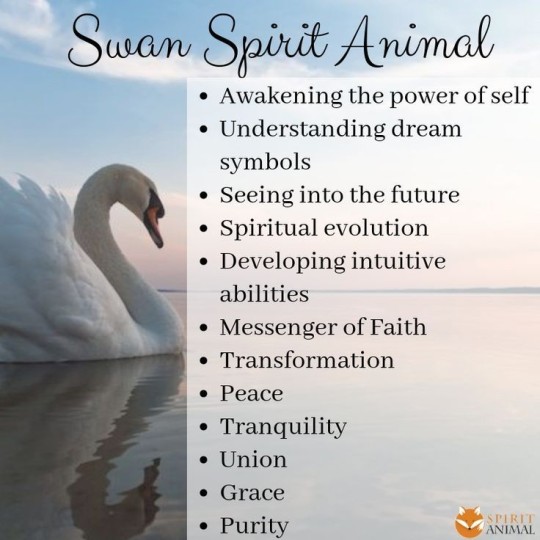


🧁Your swan is named : Sivinae (pronounced SYV-OH-NAY)
🧁your swan is silver and often known as the SilverSwan
🧁Sivinae the SilverSwan lives in the our realm and swims in a small lake, a body of water located on a constellation named Cygnus (‘Swan’) is a large northern constellation also known as the Northern Cross in the Milky Way of our Galaxy
🧁Sivinae is a sign that you are an old soul
Creator of the Cosmos
Swans, geese, cranes and other migratory waterfowl have played a role in the minds of peoples all over the world going back into prehistory. Paleolithic peoples made flutes out of swan bones, and painted swans and other birds on rock walls. A cave painting in Lascaux, France around 20,000 years old depicts a bird, possibly some kind of waterfowl, sitting on top of a pole. A number of pendants depicting swans in flight have been found in Central Siberia; they are carved out of mammoth bone and are thought to be between 20,000 - 22,000 years old as well. Since these have been found in the “men’s section” of houses and in male graves, and are phallic in nature, they have been interpreted as both representations of male power and the swan as symbol of life and creation. A Bronze Age figurine uncovered in Serbia, dated to 3500 BCE, depicts a male solar deity in a chariot driven by swans, or similar waterfowl.
In ‘earth diver’ creation myths, which are common throughout Central and Northern Asia and Native North America, a divine being dives into the primordial ocean and brings up mud or earth in order to create the world. The Altaian Tatars described this divine being as a white swan. Egyptian creation myths instead speak of a cosmic goose called Kenkenwer, the ‘Great Cackler’. This goose is associated with the earth god Geb, and although some say that it is called ‘great cackler’ due to the belief that Geb’s laughter causes earthquakes, it is also credited with laying the cosmic egg from which came the world. It was also said that the cosmic goose created the world by breaking the eternal silence of the universe with its call.
Around 16,000-17,000 years ago the Milky Way would have been seen to flow from Scorpio at its ‘base’ (often conceptualized as a dragon or serpent) up through to Cygnus, the celestial bird. The brightest star of Cygnus, Deneb, would also have occupied the position of Pole Star at about this time period - a Pole Star being the closest star to the axis around which the firmament
Swans (or geese) also feature in Hindu mythology, where they are associated with Brahma and his consort Saraswati and are known as Hamsa. Kalahamsa, the ‘swan/goose of eternity’ is said to have laid the cosmic egg, or otherwise assisted Brahma in creating the cosmos. The swan here is linked to royalty, divinity, purity, knowledge and enlightenment as well as creative power. It is said to be the vehicle of the goddess Saraswati, patroness of wisdom, learning, music and the arts. Some have suggested that Hamsa and Saraswati may be one and the same, making her the divine swan-maiden par excellence. The goddess also personifies the sacred river, Saraswati and also possibly the Milky Way.
"Lacerta, Cygnus, Lyra, Vulpecula and Anser", plate 14 in Urania's Mirror, a set of celestial cards accompanied "
The Cygnus Constellation and the Celestial Otherworld
Sculptor's model with relief of goose, Egypt. Wikimedia Commons.
Creator of the Cosmos
Swans, geese, cranes and other migratory waterfowl have played a role in the minds of peoples all over the world going back into prehistory. Paleolithic peoples made flutes out of swan bones, and painted swans and other birds on rock walls. A cave painting in Lascaux, France around 20,000 years old depicts a bird, possibly some kind of waterfowl, sitting on top of a pole. A number of pendants depicting swans in flight have been found in Central Siberia; they are carved out of mammoth bone and are thought to be between 20,000 - 22,000 years old as well. Since these have been found in the “men’s section” of houses and in male graves, and are phallic in nature, they have been interpreted as both representations of male power and the swan as symbol of life and creation. A Bronze Age figurine uncovered in Serbia, dated to 3500 BCE, depicts a male solar deity in a chariot driven by swans, or similar waterfowl.
In ‘earth diver’ creation myths, which are common throughout Central and Northern Asia and Native North America, a divine being dives into the primordial ocean and brings up mud or earth in order to create the world. The Altaian Tatars described this divine being as a white swan. Egyptian creation myths instead speak of a cosmic goose called Kenkenwer, the ‘Great Cackler’. This goose is associated with the earth god Geb, and although some say that it is called ‘great cackler’ due to the belief that Geb’s laughter causes earthquakes, it is also credited with laying the cosmic egg from which came the world. It was also said that the cosmic goose created the world by breaking the eternal silence of the universe with its call.
Swans (or geese) also feature in Hindu mythology, where they are associated with Brahma and his consort Saraswati and are known as Hamsa. Kalahamsa, the ‘swan/goose of eternity’ is said to have laid the cosmic egg, or otherwise assisted Brahma in creating the cosmos. The swan here is linked to royalty, divinity, purity, knowledge and enlightenment as well as creative power. It is said to be the vehicle of the goddess Saraswati, patroness of wisdom, learning, music and the arts. Some have suggested that Hamsa and Saraswati may be one and the same, making her the divine swan-maiden par excellence. The goddess also personifies the sacred river, Saraswati and also possibly the Milky Way.
"Lacerta, Cygnus, Lyra, Vulpecula and Anser", plate 14 in Urania's Mirror, a set of celestial cards accompanied by 'A familiar treatise on astronomy' (ca. 1825). Wikimedia. Public Domain.
The Cygnus Constellation and the Celestial Otherworld
Cygnus (‘Swan’) is a large northern constellation also known as the Northern Cross. It lies in the plane of the Milky Way - in fact, the Cygnus constellation marks the beginning of what is known as the Great Rift, Dark Rift or Dark River, a band of dark interstellar dust clouds that appears to split a third of the Milky Way lengthwise in half and which extends from Cygnus through to Sagittarius. In the case where the Milky Way is perceived as the body of a goddess, Cygnus would be roughly where her two legs part - in some sense, perhaps her womb. Where it is the World Tree, it would be situated where its roots begin to split from the trunk. It is interesting to think that in Norse myth, two swans (from which all other swans descend) are depicted as swimming upon the lake or pool - the Well of Origin - at the base of the Tree. Since Cygnus is found beside the constellation Lyra, it was said by the Greeks that Cygnus represented Orpheus who was transformed into a swan following his death at the hands of the Maenads and placed in the sky next to his beloved lyre.
Around 16,000-17,000 years ago the Milky Way would have been seen to flow from Scorpio at its ‘base’ (often conceptualized as a dragon or serpent) up through to Cygnus, the celestial bird. The brightest star of Cygnus, Deneb, would also have occupied the position of Pole Star at about this time period - a Pole Star being the closest star to the axis around which the firmament appears to revolve. Some have suggested - perhaps controversially - that the shamanistic peoples of the Upper Paleolithic period during this time conceived of the image of the World Tree/Axis Mundi, with a reptilian creature circling its roots and an avian figure resting in its upper branches. If so, it is fascinating to think that this imagery survived into the mythologies of much later peoples, spread all over the world.
Some have also suggested that for many early peoples, who orientated temples, great earthworks, megaliths and graves towards the north, their belief was that the realm of the dead lay in the direction of the north. For several cultures, the Milky Way was thought of as a path to the otherworld, a ‘ghost road’ of sorts, which gods, shamans and the spirits of the dead would travel. Considering this, alongside Cygnus as the celestial bird of cosmic creation, resting in the uppermost branches of the World Tree or else swimming upon the Well of Origin, combined with Deneb as the Pole Star and cosmic axis at the time this mythic imagery may have originated, provides us with a powerful analogy. They may have thought that Cygnus or other places in the stars served as gateways to the celestial otherworld.

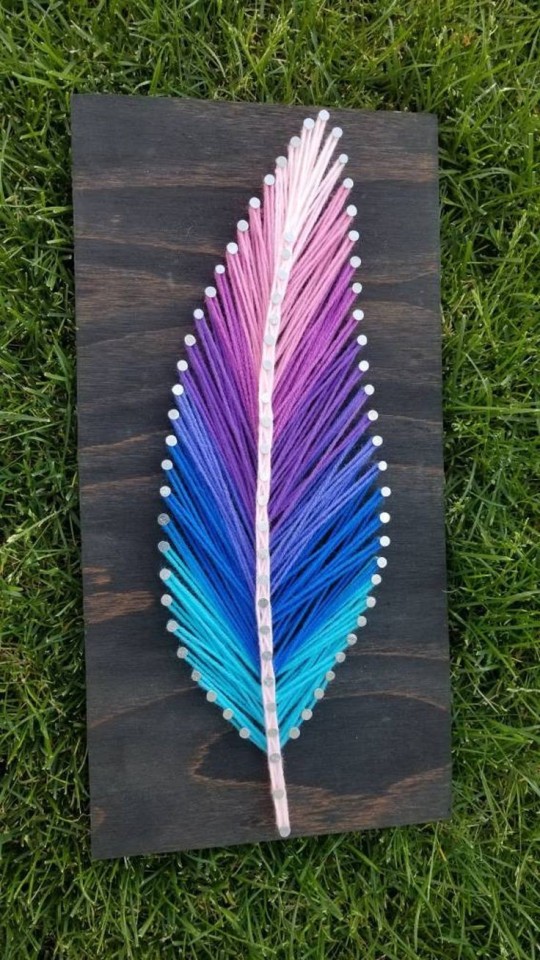

Swan message
With love and the right blend of spices, you can transform an otherwise unremarkable dish into something that is truly delectable. The same goes for anything you try in life, Taurus. If you are looking at a dull, ordinary assignment you have received or going through the motions with an obligation, or just with the goal of getting by, you need to recognize you have far more power than that. It is what you bring to what you are doing that will make it stand out. Put your signature on it and aim high.
I hope you enjoyed this please leave feedback hi, if took me hours to complete 😊☺😀 sooomuch enjoyed Sivinaes energy this majestic bird is something special in your life . 💖
#spirit guide game#spirit guide#spiritual#spiritualguidance#spiritual guide#guardian angel#angel oracle cards#oracle card of the day#daily spells#daily tarot#daily oracle#tarot card of the day#pick a card reading#pick a pile reading#pick a pile#pick a card#pac tarot#free tarot readings#free tarot#witchcraft#witchblr#soulmate reading#witches of tumblr#witches#tarot
5 notes
·
View notes
Text
Bracket Seeds and Methodology
As mentioned in my pinned post, the 48 species contained in the tournament represent all native North American species in the order Anseriformes (ducks, geese, and swans), according to the National Geographic Field Guide to the Birds of North America.
In order to produce brackets that would work out well and not result in early match-ups of popular species, I seeded the species according to 4 popularity metrics: the number of google search results for the common name, the number of tumblr posts in the species’ tag over the past week, days since the last tumblr post in the species’ tag, and number of colours (either of plumage, legs, or bill) other than white, black, brown, or grey present on each species. This last metric was included to correct for rare species that may not be widely searched but whose visual interest is likely to make them more popular. I then developed a formula that used the metrics to produce a score for each species where the higher the score, the greater the prospective popularity. I manually checked the ranking of species to see if the order looked reasonable (with popular or common species at the top, and less common species at the bottom), in order to verify that my scoring system was performing as expected. The bird with the highest score became the first seed, the second highest became the second seed, and so on, for all 48 species.
The seed positions are as follows:
American Black Duck
Mallard
Canada Goose
Wood Duck
Muscovy Duck
Common Merganser
Cinnamon Teal
Redhead
Green-winged Teal
Blue-winged Teal
Snow Goose
Black-bellied Whistling duck
Hooded Merganser
Masked Duck
Long-tailed Duck
Emperor Goose
Tundra Swan
Bufflehead
Harlequin Duck
Mottled Duck
Common Goldeneye
Gadwall
King Eider
Northern Shoveler
Red-breasted Merganser
Ruddy Duck
Common Eider
Surf Scoter
American Wigeon
White-winged Scoter
Canvasback
White-cheeked Pintail
Black Scoter
Ring-necked Duck
Pink-footed Goose
Greater White-Fronted Goose
Trumpeter Swan
Brant
Ross’s Goose
Fulvous Whistling Duck
Barrow’s Goldeneye
Spectacled Eider
Steller’s Eider
Northern Pintail
Greater Scaup
Barnacle Goose
Lesser Scaup
Cackling Goose
7 notes
·
View notes